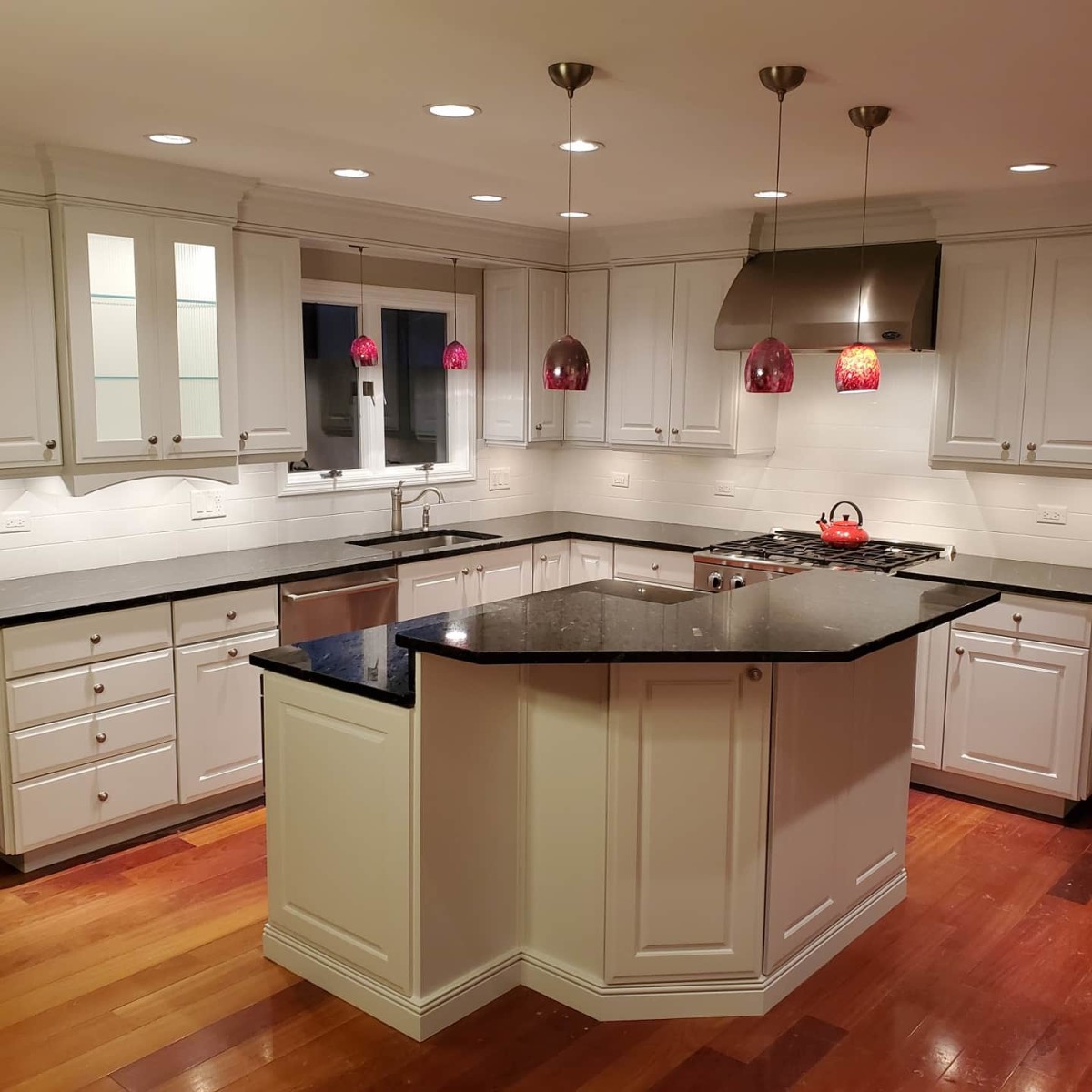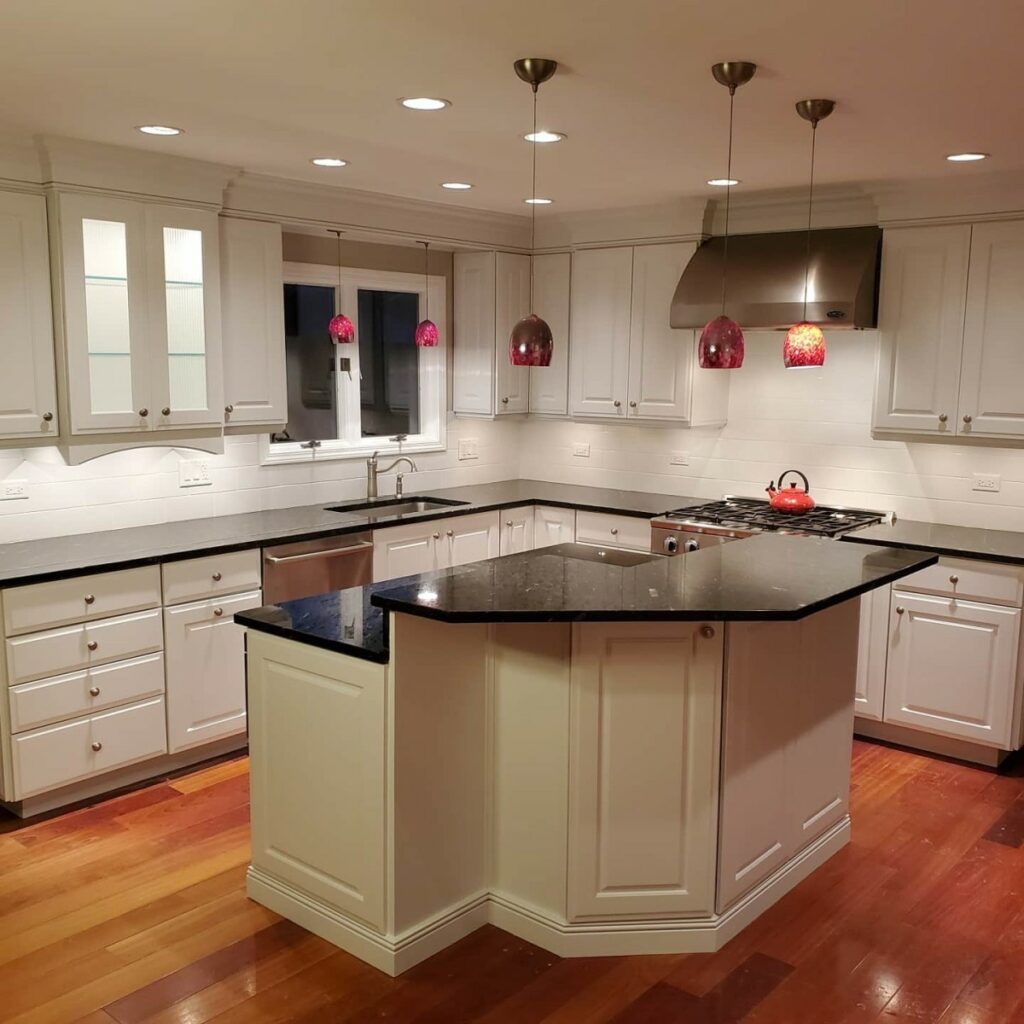
The lower part of the wall surface is called the panel and its height is typically less than 1,8 m. Part of the wall, located above the panel, called the tapestry, and the narrow strip between the tapestry and the panel – a frieze.
The panels in the kitchen most often painted in darker colors, because they are dirty. If you prefer, you can paint the panel points or Crapo. This can be done as follows: in the right hand take a large centrifugal brush. Before the wall surface at a certain distance, place a stick and strike it with a brush so that the spray from the blow fell on the wall.
When painting walls in this way, you can use two or more different color tones, randomly splashing paint across the surface, which will give you the opportunity to get a unique decorative effect. On such a surface is less noticeable pollution.
If you want a one-color surface, the dye alternately apply a thin layer in 2-3 hours. Covers only the dry wall. Apply a new layer to the previous just after he dries.
Tapestry made to cover the lighter Kohler, compared with the panel. If you want to perform on it a picture, then apply it using a stencil or special cushions with decorative ribbed surface. Them, you can buy in a store.
Freese used for decoration. It can be painted in a color contrasting color panels, or tapestry. If desired, be coated with its decorative tile or wood lath. It should be borne in mind that a wide frieze makes the room visually lower than it really is.
Ready to use paint thoroughly. In that case, if you work with wax paints, dilute them with drying oil (for oil paints) or water (for water-based paints) and also before applying mix well. If you want to combine several colors, each color pre-mix and strain. Remember that you can not mix different kinds of colors (eg, certain types of enamel are not mixed with oil paint and water-soluble dyes).
For painting the walls, use the brush in different sizes and rolls. Shape and size of the brush pick up, depending on the size and shape of the walls or its individual parts. For painting large surfaces to apply a large centrifugal brush, and for small areas of the surface need a small brush End.
Immerse the brush into the paint only up to half of her nap. Thus, the paint will not penetrate into its inner part that extends the life of the brush, because the tool will not have long to keep in a solvent to wash the paint.
When painting surfaces, try to make quick and accurate movement of a brush that has not had time to evaporate the solvent, and paint could well connect with the surface. Apply a fresh coat of paint, overlapping the just painted surface 3 cm Do this before the previous layer is dry, then paint the border will be virtually unnoticeable.
That the process of staining did not appear and wrinkles begin to flow, you need to press harder on the brush and hold it from top to bottom, evenly smearing the paint.
Working with the roller requires special skills. First, lower the roller into the paint, then shake the excess paint, tapped on a metal grid that is stretched over a shallow bucket or other container. After this roller spend 2-3 times the same place the surface in a direction from the top down. With each new movement increases the pressure. Neighboring layer apply to overlap the previous layer by about 3 cm
After staining the walls with oil paint to make them more shiny, apply a thin layer of special oil varnish. Luck should be preheated, and cover them only dry wall.

